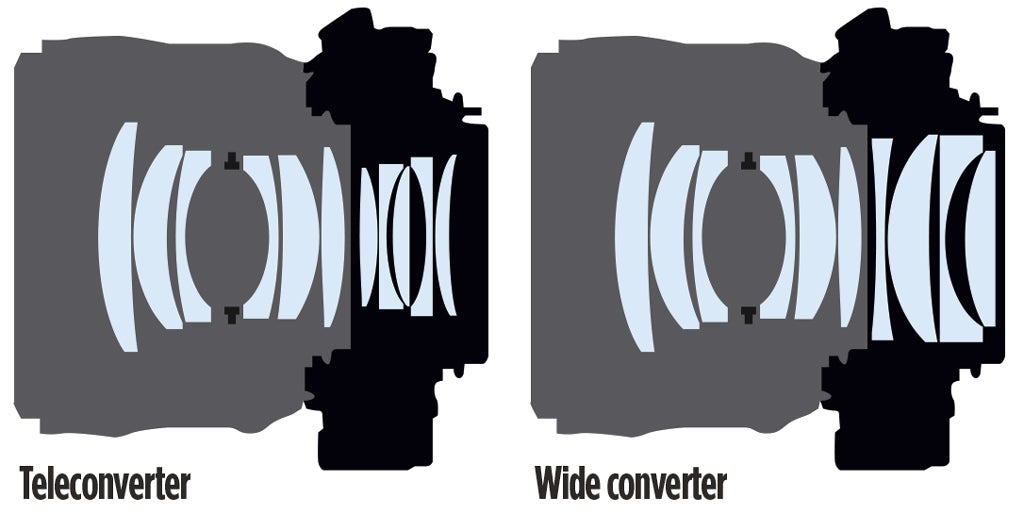Professor Bob Newman explains how it is possible for a lens to increase its ‘speed’
With the advent of mirrorless interchangeable-lens cameras, there has been the development
of a new accessory, the ‘speed booster’, which apparently increases the ‘speed’ of a lens to which it is fitted. To understand how the speed of a lens can be ‘boosted’, we need to look at how these devices work.
First, we should note that ‘speed booster’ is a rather misleading name; a more descriptive term would be ‘wide converter’, which would make it clear that these devices are acting in a similar way to a teleconverter, which they are.
A teleconverter increases the focal length of a lens by placing a negative lens combination behind that lens (see image, below left). The power (the reciprocal of the focal length) of a combination of lenses is approximately equal to the sum of their powers, so if a negative lens is included in the group, it reduces the overall power, thus lengthening the focal length. This in turn requires the lens to be further away from the image plane to focus properly, so a teleconverter also acts as a short extension tube, in order to maintain focus.
The f-number of a lens is the focal length divided by the aperture diameter. Since the teleconverter is placed at the back of the lens, behind the aperture, it has no effect on its diameter, but since the focal length has increased, the f-number must also increase, and the combined lens is slower (in proportion to the focal-length multiplier) than the original lens.
A wide converter has the opposite action. It places a positive lens behind the original lens
(see image, below right), thus increasing its power and shortening its focal length. Unfortunately, the shorter focal length means that the combined lens will achieve focus short of the original image plain, so in normal circumstances, a wide converted lens could never achieve infinity focus. However, mirrorless cameras generally have a lens register (distance between the lens flange and focal plane) that is somewhat shorter than that of an SLR, which requires room for the reflex viewfinder. Often the difference is as much as 20mm. In effect, using a DSLR lens with a mirrorless camera, there is available up to 20mm of a ‘negative extension tube’, which is what allows the wide converter to operate.
If we now consider the f-number of the converted lens, the aperture diameter is unchanged as before, but the focal length is shorter, so overall the f-number has got smaller – that is, the lens has become ‘faster’. In reality, the lens is still transmitting the same amount of light, but it has just been packed into a smaller area by the extra power of the lens – which is why the ‘speed booster’ only works well if the sensor of the camera it is used with is smaller than that of the camera for which the lens was designed.






